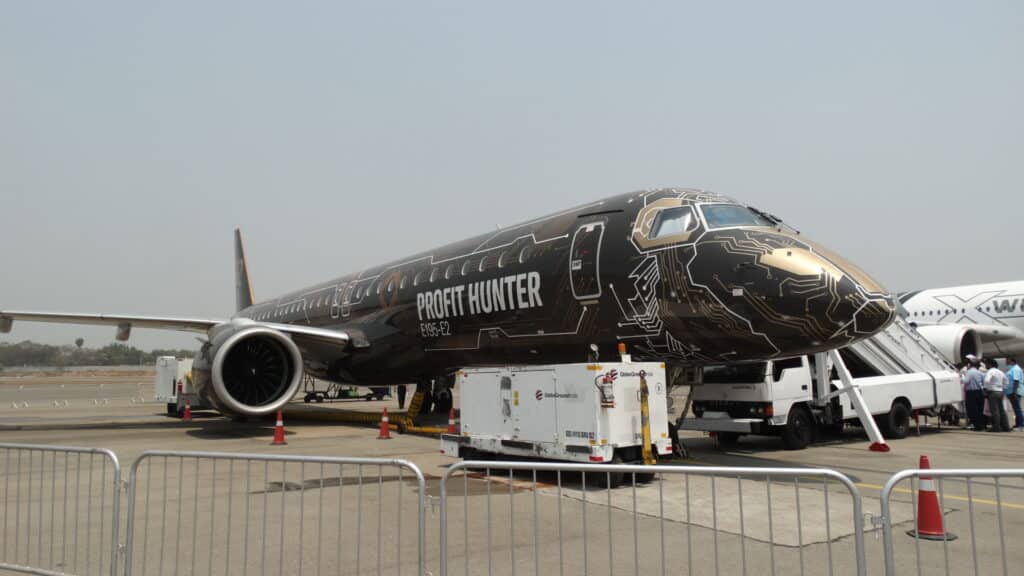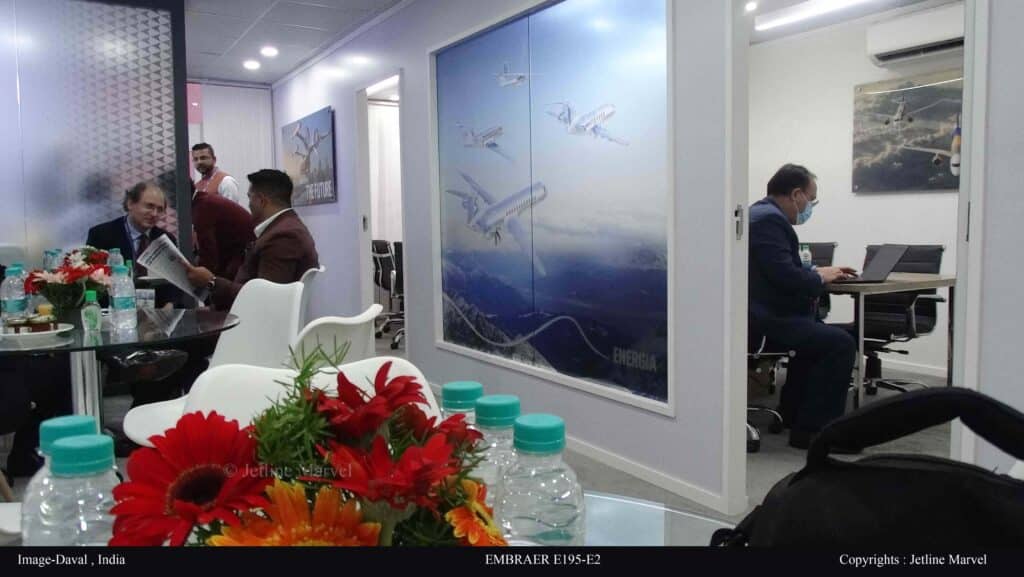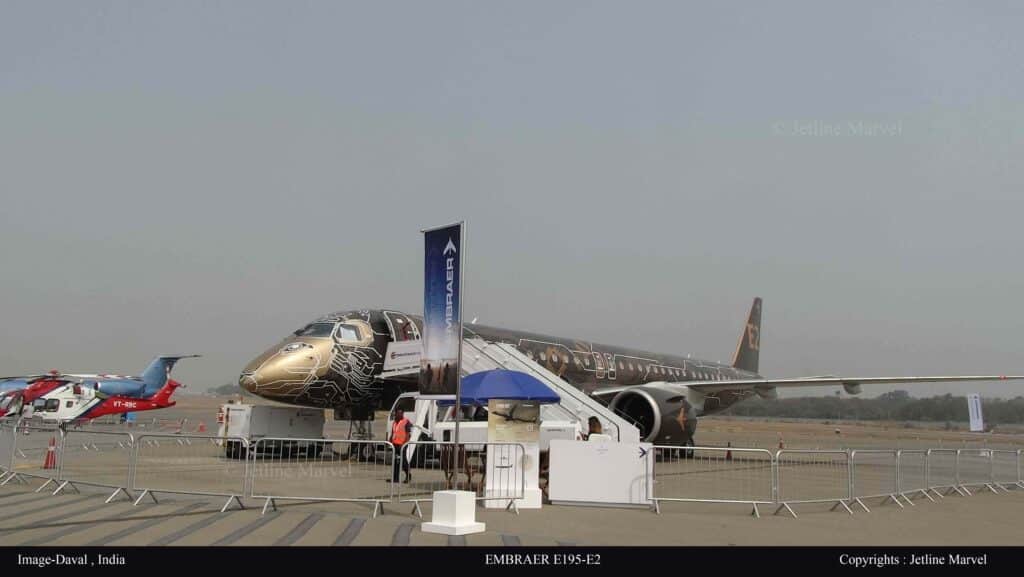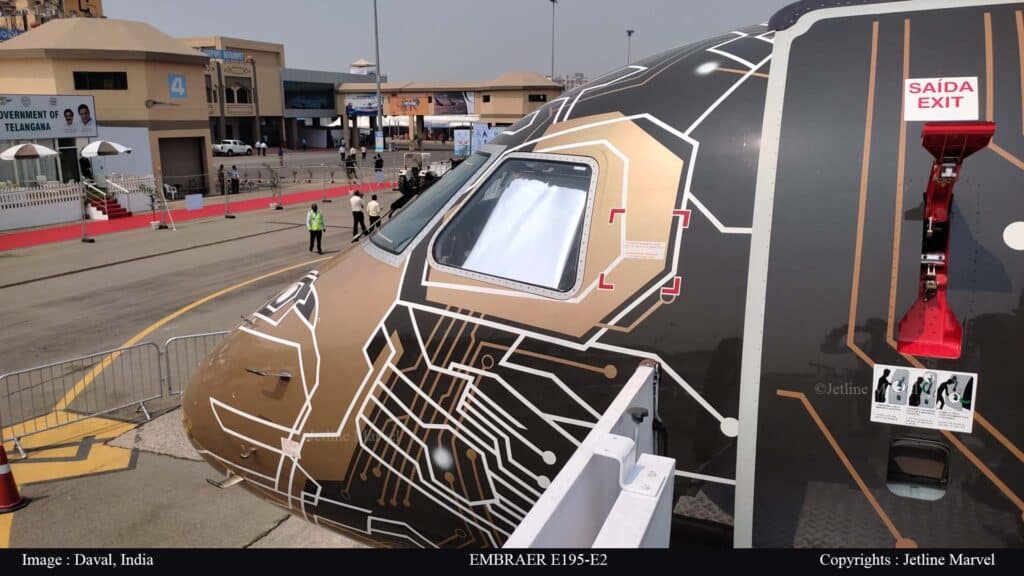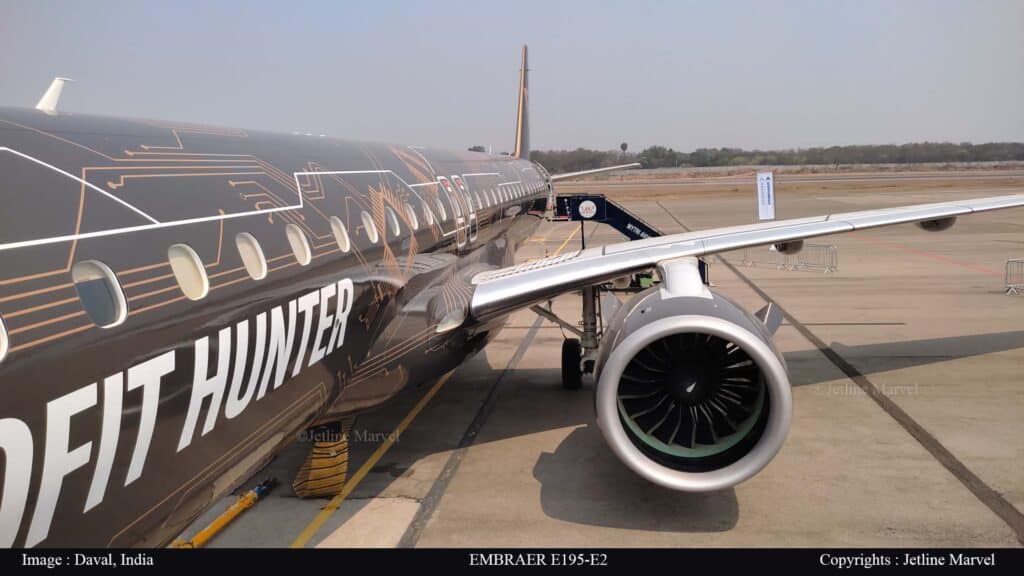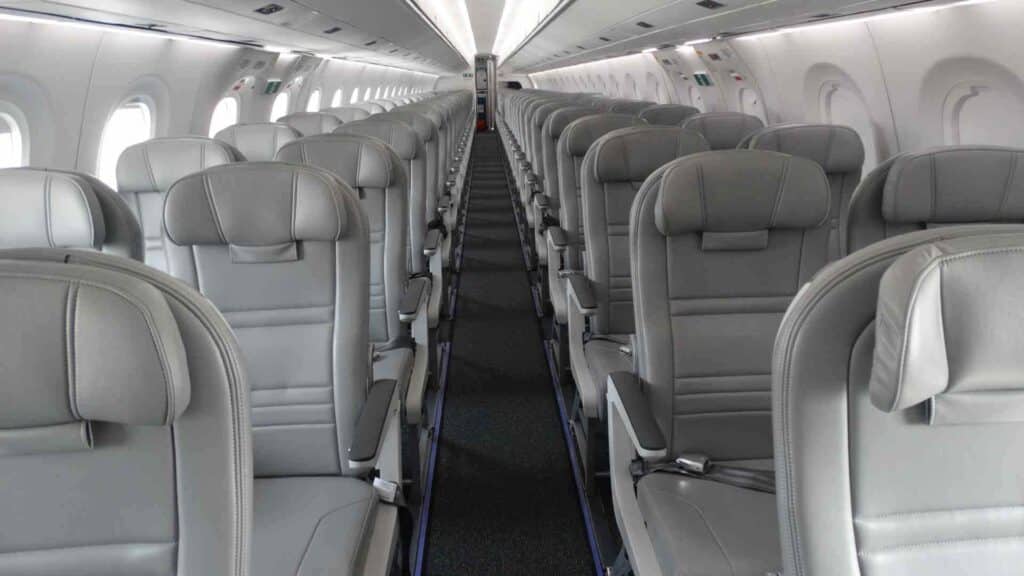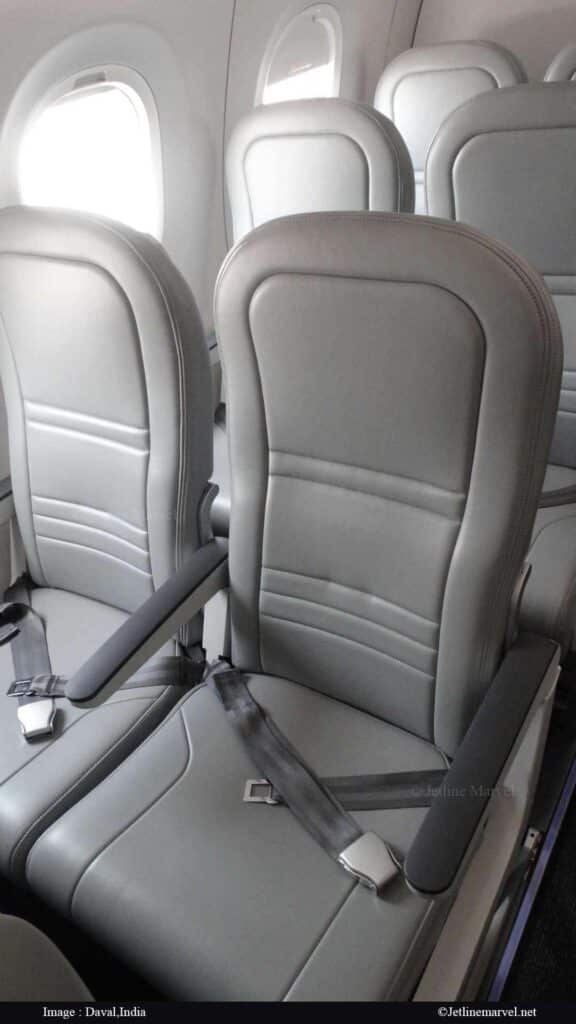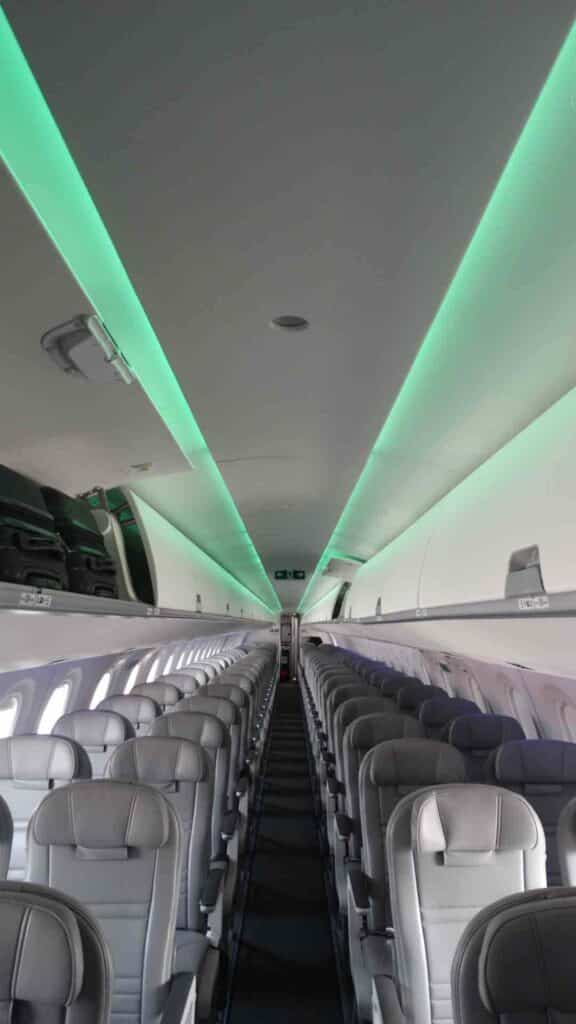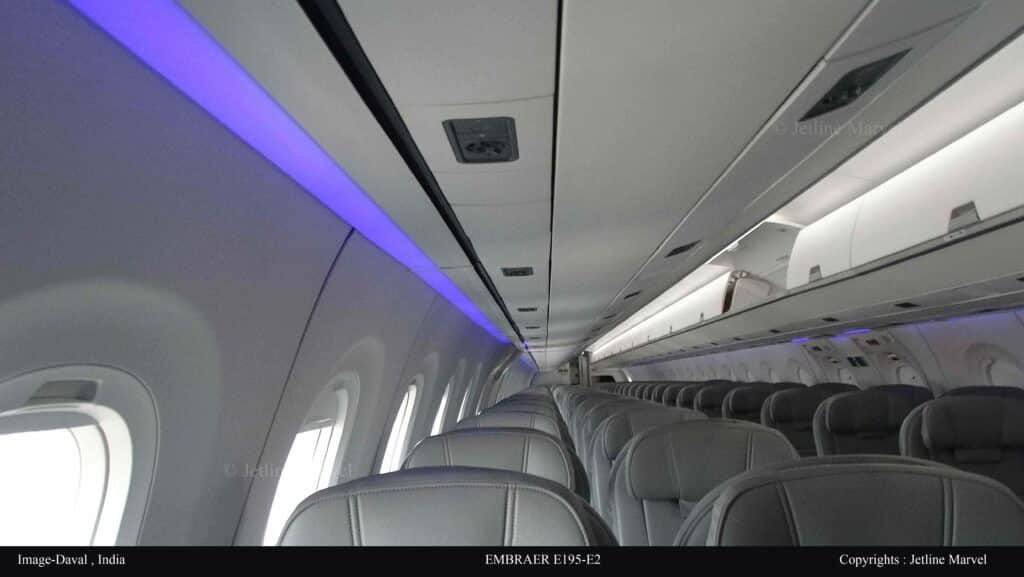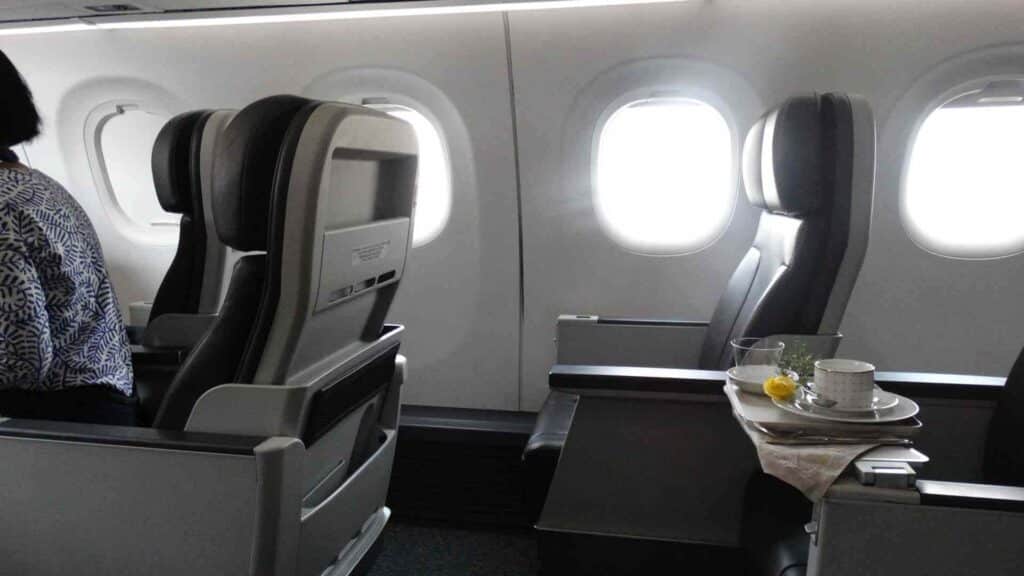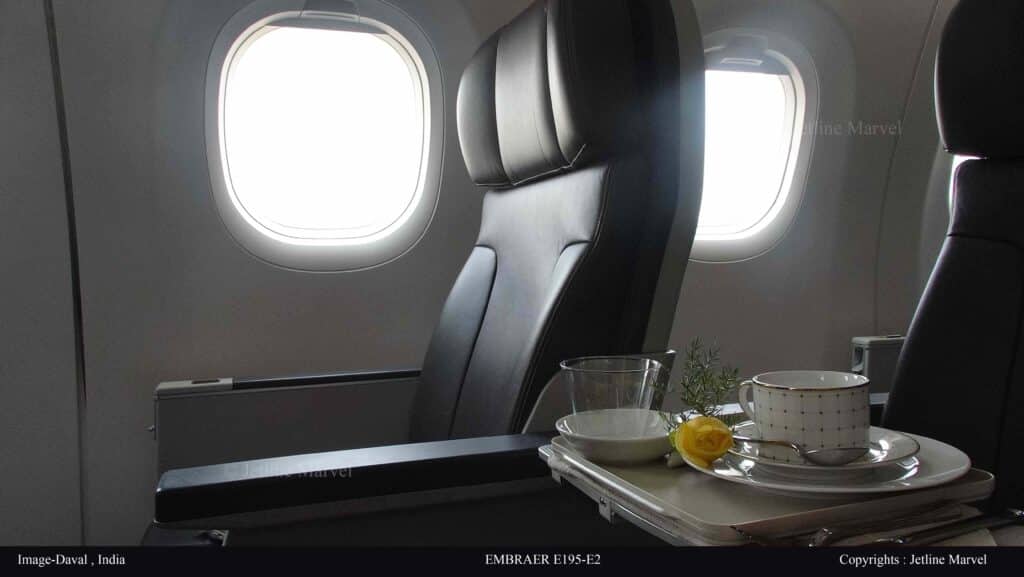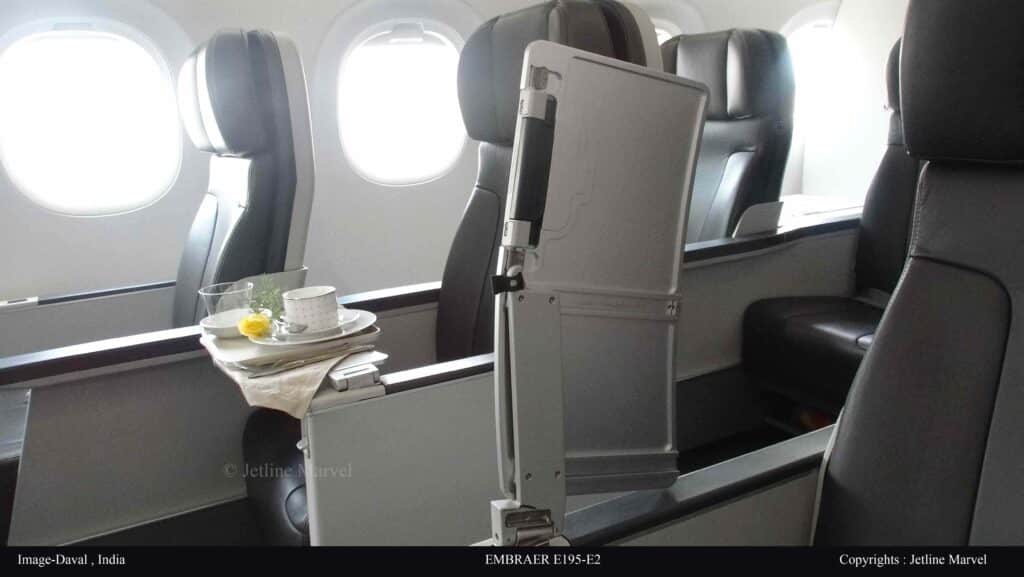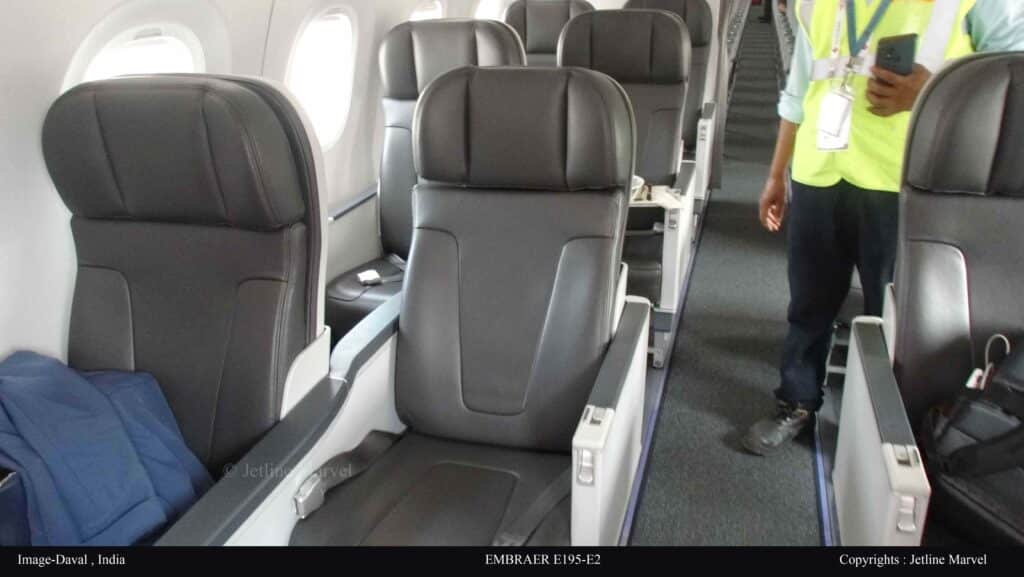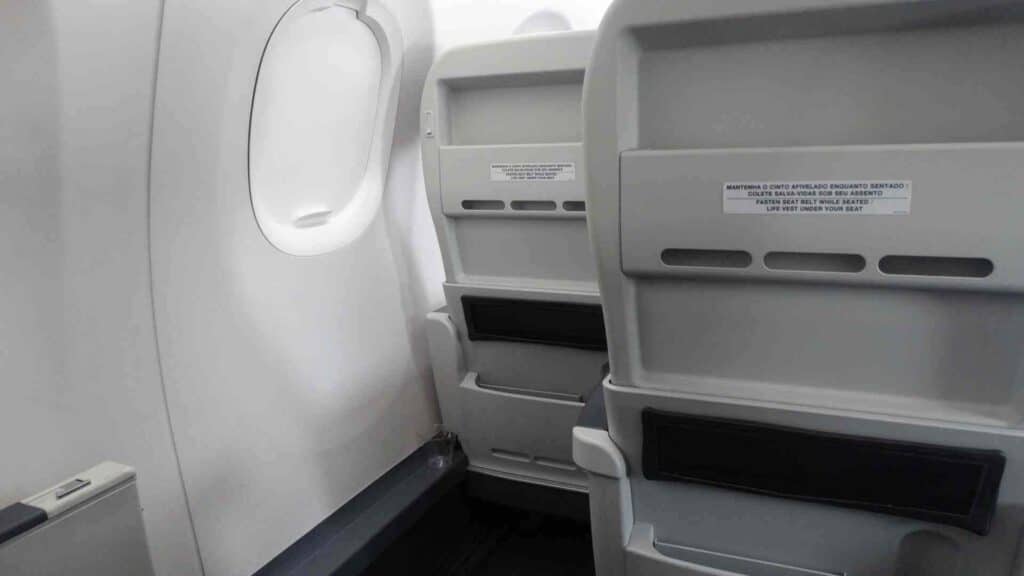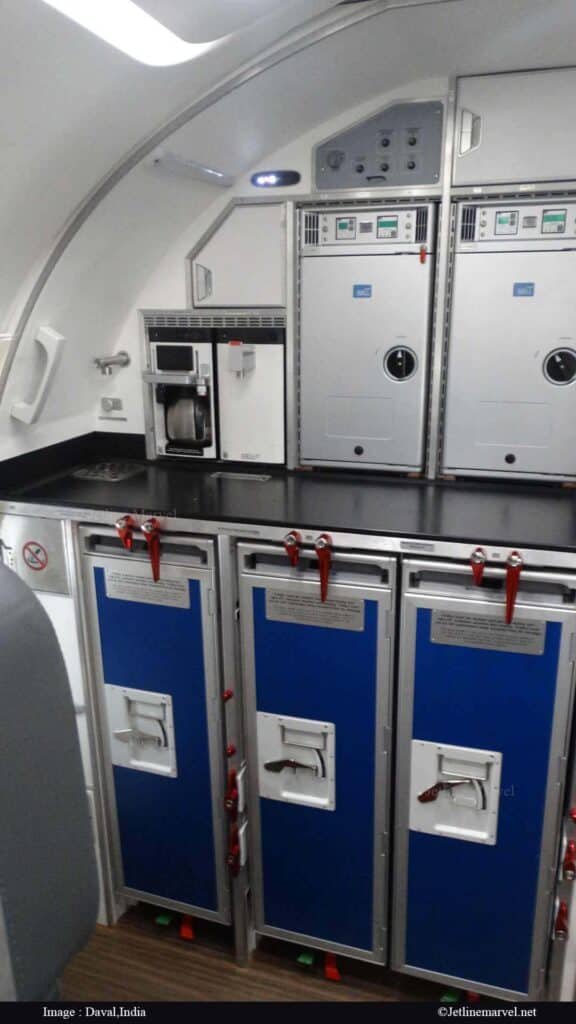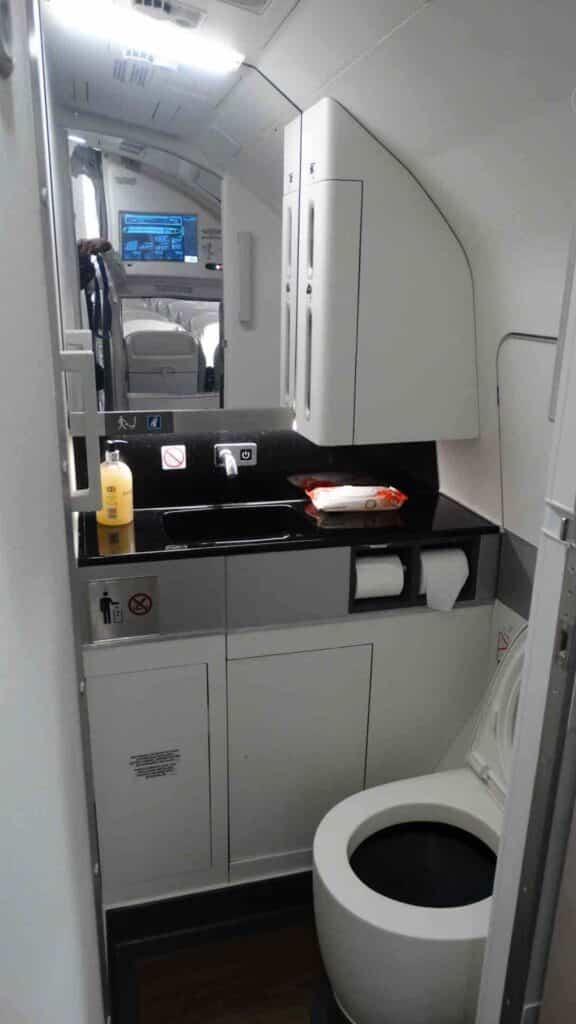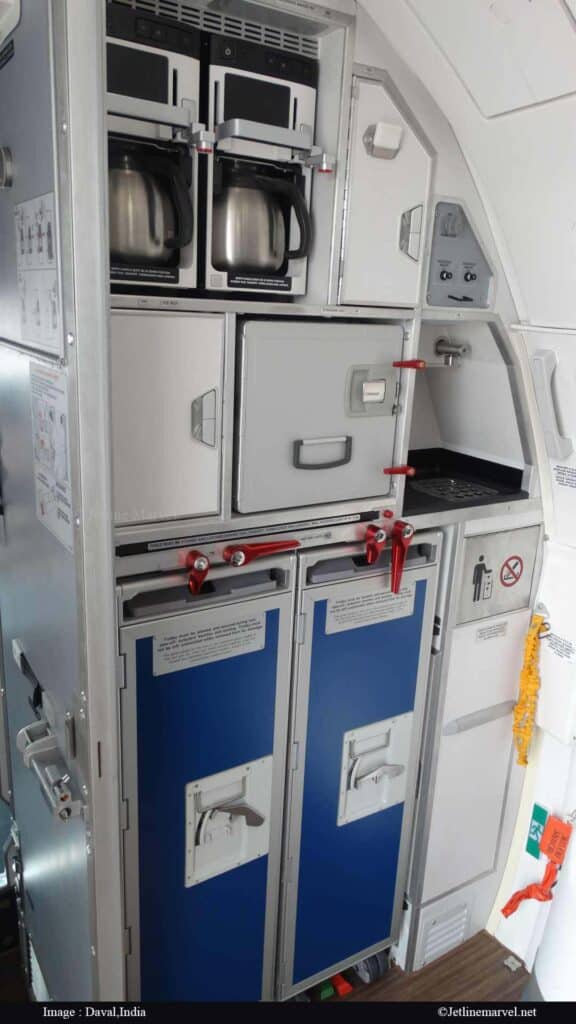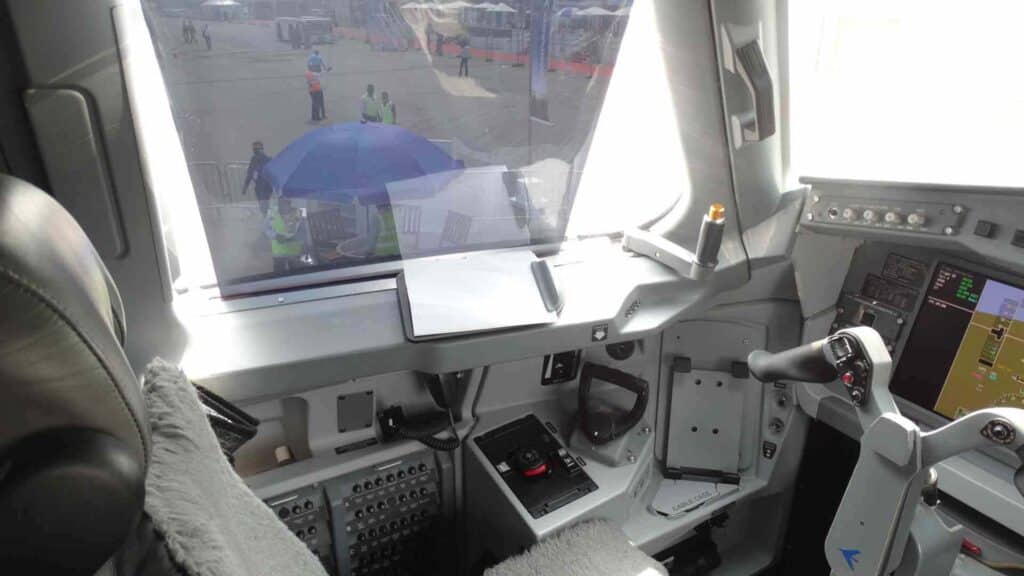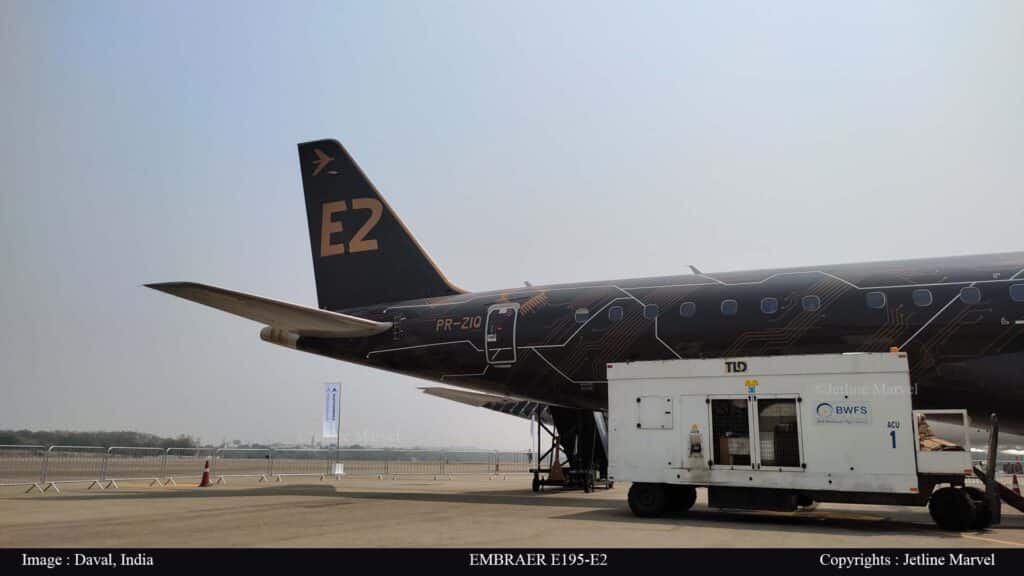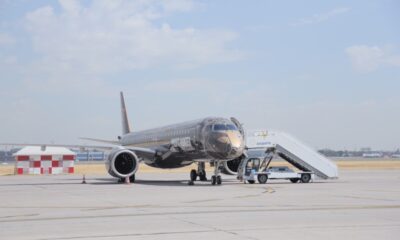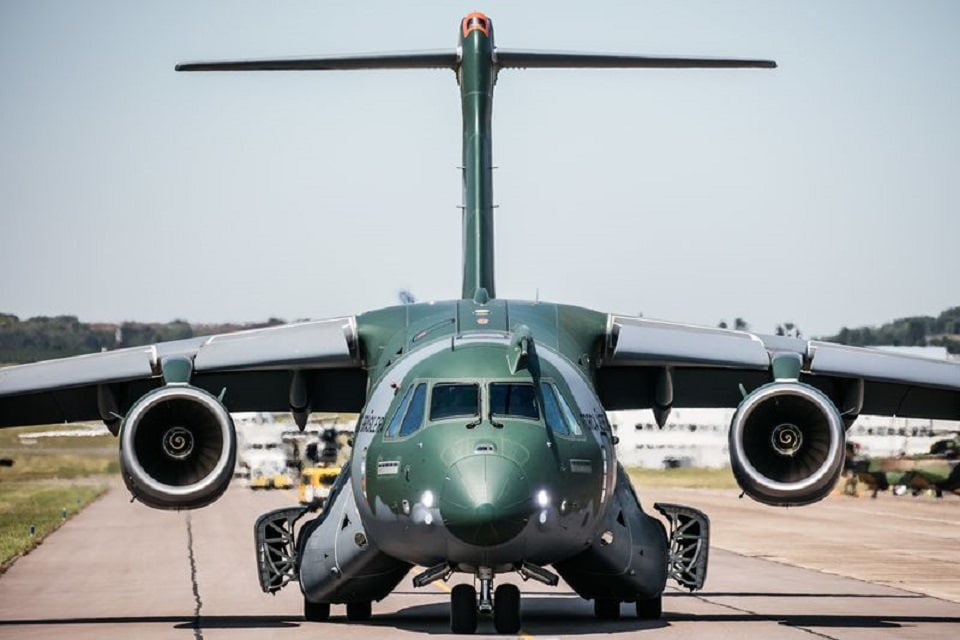Aviation
JM Exclusive tour onboard the EMBRAER E195-E2 Demonstrator.

At Wings India 2022, we had the opportunity to see a static exhibition of aircraft on tour. In this post, I’ll talk about the Embraer E195-E2’s cabin tour and why it’s one of the greatest planes in its class and the most appropriate aircraft for the Indian market.
I came to Embraer Chalet in the morning and met Nilma Missir-Boissac, Embraer’s APAC communication head. The hospitality of the Embraer team was outstanding, and their responses were humble and courteous. I also received a few interesting documents that helped me learn more about the plane. Nilma cited the fact that most aircraft, such as the A320 and B737, have a capacity of 180 seats or more yet only fill 130 – 140 seats, implying that the aircraft can only fill 70% of its capacity.
She goes on to say The Embraer is precisely matching the need for 90-140 seat capacity in the Indian market while also saving airlines a significant amount of money in terms of operations and fuel. The plane features plenty of legroom and accommodation, as well as a large luggage compartment that allows you to bring larger things on board. She went on to say that the E195-E2 aircraft has the most modern technical features and has been updated from previous generations, resulting in overall efficiency increases and a 17.3 percent reduction in fuel usage.
- New engines contributed 11% of the total.
- New Wings and Aerodynamic Cleaning received a 4.8% rating.
- Fly-By-Wire 1.8% from 4th Generations
Boeing Begins Build on New Zealand’s First P-8A Aircraft
Even before COVID, 50 percent of domestic flights in India had between 90 and 150 passengers every trip, according to Embraer’s analysis. The combination of optimal capacity and low unit cost of the E195-E2 makes it an appealing platform for connecting metro to non-metro and non-metro to non-metro cities in India.
[the_ad_placement id=”article-ad”]
The Embraer E-Jet E2 family of medium-range jet airliners is the successor to Embraer’s initial E-Jet. The first version, the E190-E2, flew for the first time on May 23, 2016, was certified on February 28, 2018, and went into service with Widere on April 24, 2018.
The three twinjet variants use the same four-abreast narrow-body fuselage with varying lengths and three new wings, Pratt & Whitney PW1919G turbofans in two sizes, updated avionics, and fly-by-wire controls.
As is usual in the aerospace industry, most of the best-selling aircraft are rebuilt with new features and technology to make them far more useful to consumers on the market while also improving fuel economy. The A320 neo and B737 max are segmented for several sorts of variants based on the seats and range, similar to how Airbus and Boeing reintroduced its A320 and B737 respectively with the A320 neo and B737 max. Similarly, Embraer resurrected its much-anticipated E195 aircraft from 2004 as the E195-E2 with new features and technologies to remain competitive in the market.
[the_ad_group id=”4059″]
One positive aspect of the E-series planes. Embraer built aircraft wings to match the size of the fuselage, lowering the weight and drag ratio, which is critical for aircraft. The wing span of the Airbus A320 series and the Boeing B737, for example, is the same. However, the wings of the Embraer E175,190, and E195-E2 have different sizes. This aids in the improvement of each aircraft’s performance.
As of March 31, 2021, 1,596 Embraer E195 aircraft have been sold. The E2, on the other hand, is taking its time to gain confidence in the fresh market. This aircraft is well suited to regional destinations with minimal traffic, such as China and India. E2 has received 205 orders from 12 clients throughout the world as of today. Azul of Brazil and Aircap of Ireland have placed the largest orders for E2 planes.
Air Costa Airlines was the first client for the E195-E2 in India, which was run by the Aircap firm, who provided three leased aircraft. However, they stopped in 2017, citing financial issues as the reason.
At Wings India 2022 in Hyderabad, Embraer showed its E195-E2 demonstration plane. Let’s take a look at how this aircraft obtained its cutting-edge avionics and interior design.
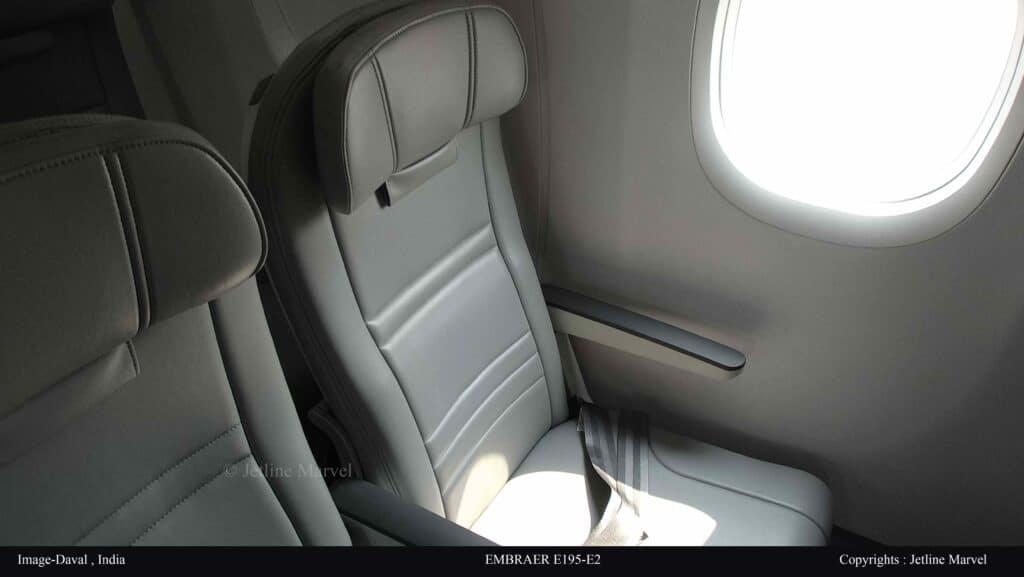
The middle portion features the Premium economy and adequate spacing, as well as a static seat configuration with a somewhat wider window.
At Wings India 2022 in Hyderabad, Embraer showed its E195-E2 demonstration plane. Let’s take a look at how this aircraft obtained its cutting-edge avionics and interior design.
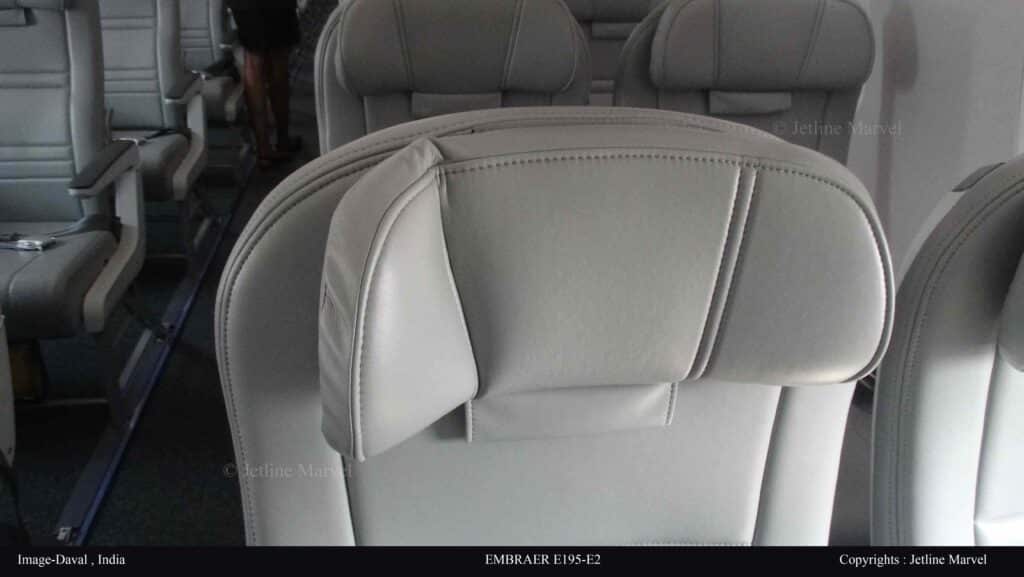
Passengers in Premium Economy may sleep without their heads resting on the shoulders of others thanks to the unique Headrest option.
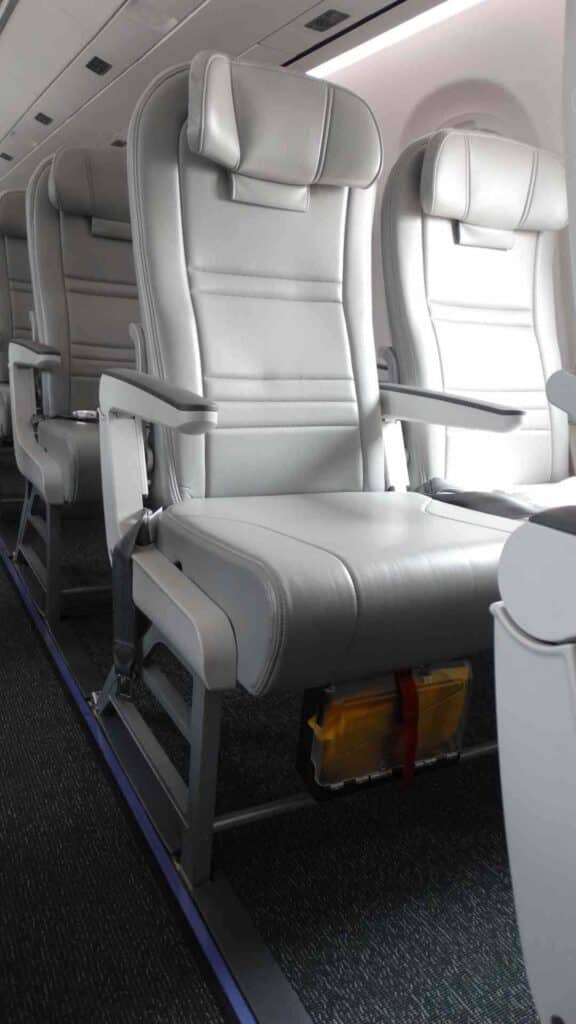
With a simple but practical design, emergency survival packs are located directly below the seats and provide enough room to store additional small bags or keep your legs cooler.
Embraer Develops Cargo Transportation Solutions for Commercial Aircraft
Brazil’s Embraer says KC-390 goes off runway in test
Embraer displays cutting-edge E195-E2 at wings India
The Embraer aircraft perform the taxiing operation on its own ?
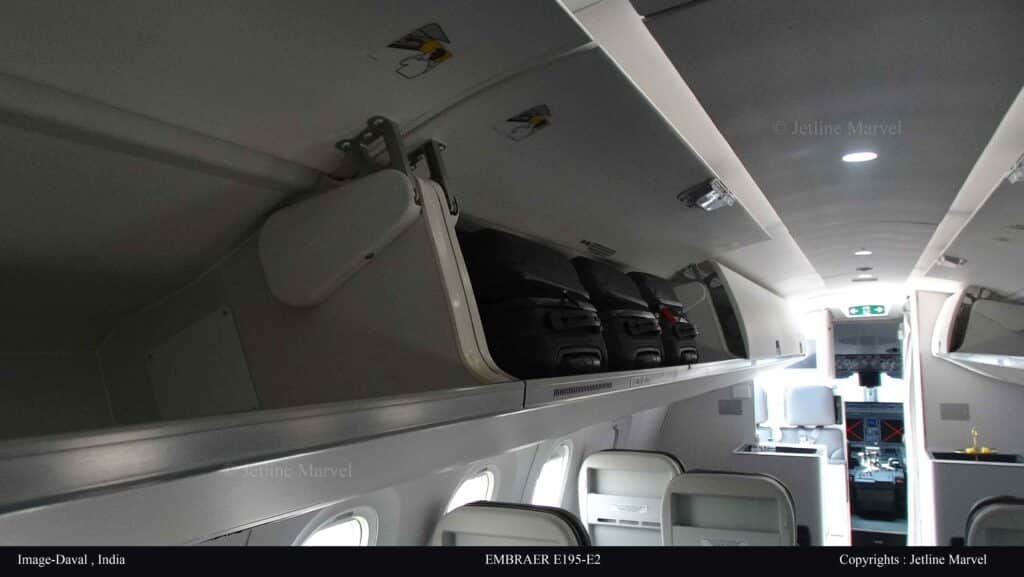
One advantage of luggage bins is that they are broader and easier to get the bags when they are rolled down to boxes.
According to Embraer, the number of improvements made in the aircraft from previous generations has boosted efficiency, which has resulted in a 25% reduced fuel burn per seat when compared to A220-300 aircraft.
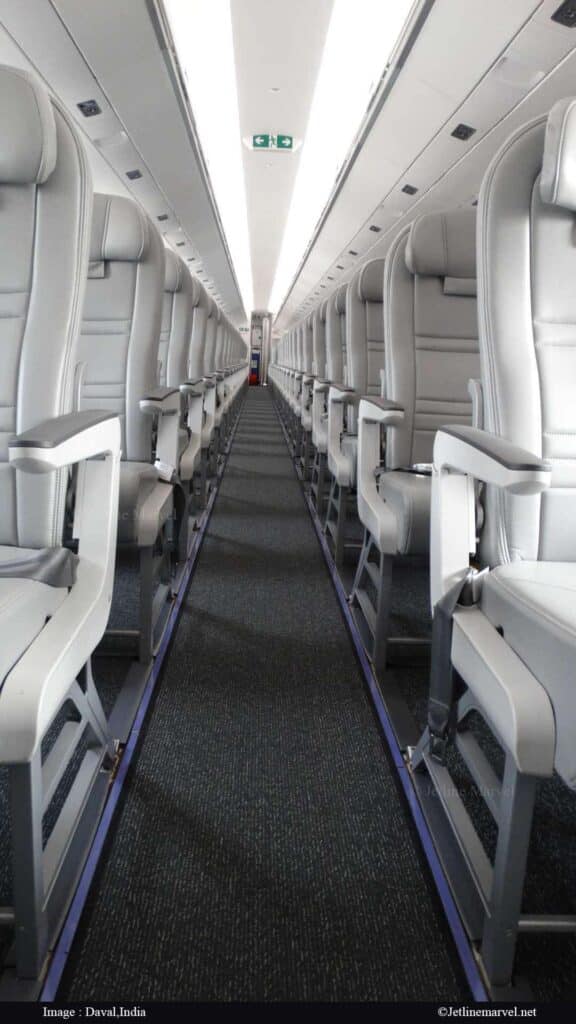
The seats are designed in such a way that housekeeping and air circulation around the cabin may be readily maintained.
Embraer and American Airlines Sign Contract for 15 E175s
The lighting on the aeroplane varies with each phase of flight, creating mood lighting. It’s designed to work in tandem with a traveler’s circadian cycles, assisting with sleep when resting and waking up when landing.
[the_ad_group id=”4060″]
The E195-E2 is the biggest of the E2 series, with a single-class economy layout seating up to 146 people. The lack of centre seats in the 2-2 arrangement of the cabin may be the first issue that many passengers notice. Aisle or window seats are available in each row.
Embraer highlighted the various options, which range from 29 inches at the smallest to 34 inches at the largest. Slim line seats might come with standard conveniences like normal-size tray tables and literature pockets. Seats with a higher pitch level may provide more conveniences. A seat with 34 inches of legroom offers adequate area for a headrest.
Airlines can also add a full-size business class cabin, similar to those seen on bigger planes. Embraer designed and manufactures a unique business class seat exclusively for the E190-E2 aircraft line.
[the_ad_placement id=”article-ad”]
A 2-2 arrangement with a seat pitch of at least 51 inches is possible with staggered seats. On the E170/190 series of aircraft, the standard business class layout is a 1-2 arrangement to allow for bigger seats.
Passengers in the window seat should be able to stroll in front of the aisle seat without disturbing their fellow passengers, making it simpler to reach the aisle. On an E-Jet in a 2-2 business class layout, it’s not quite direct aisle access, but it’s the next best thing.
Embraer is presently fine-tuning the product, which is the first of its sort on an E-Jet. The E2 series aircraft have wider windows than the preceding generation, providing more natural light and greater views for passengers.
Navigation charts and maps may be presented on the displays without the requirement of an external device, providing pilots with the most up-to-date situational awareness.
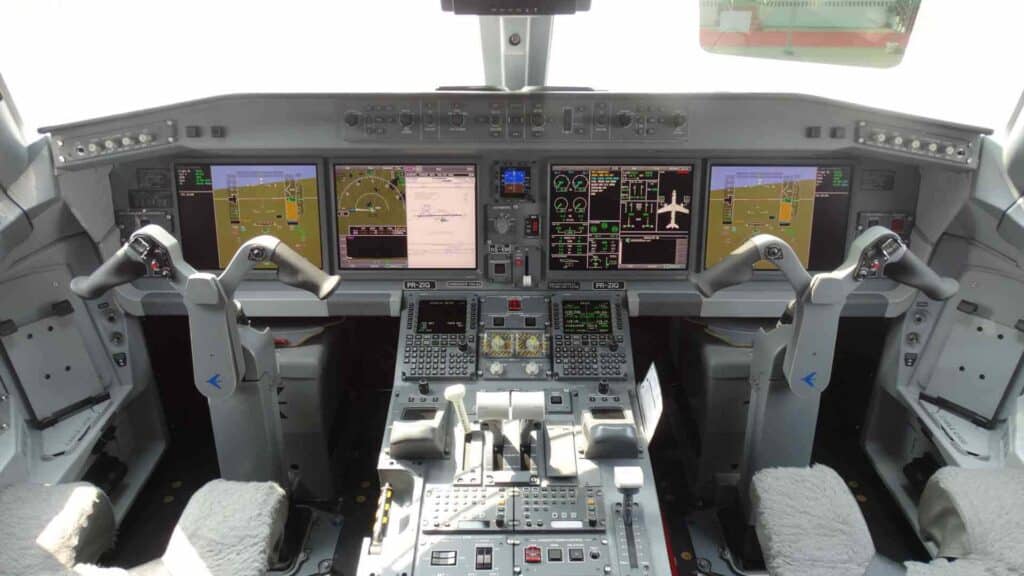
The cockpit is equipped with the most up-to-date avionics and a fourth-generation fly-by-wire technology.

Flight crew Capt Berto , Embraer ” This aircraft is wonderful and simple to operate and maintain, having been in service for almost 20 years. This aircraft would be ideal for the Indian aviation sector. “
Embraer pilots of the current generation will also observe that the control column is the same in an upside-down W-shape. Airlines may save money on pilot training by using a cockpit that is substantially equivalent to the E170/E190 series of aircraft. Only slight modifications in training are necessary because the type ratings are same.
[the_ad id=”11602″]
In India, most airlines employ ATR aircraft for small-area connectivity since the engines used in ATR aircraft are noisy, whereas Embraer uses Pratt & Whitney engines, which are quieter than ATR engines. Currently, the E145 ERJ is operated by Star Air in South India.
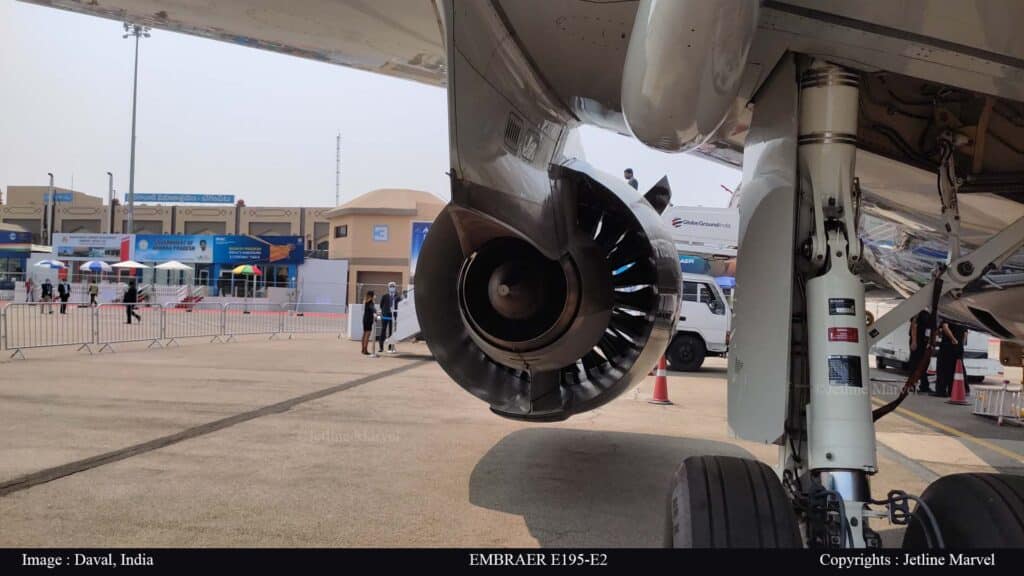
The aircraft has a basic landing gear design for ease maintenance, and the PW Geared Turbofan engine can be seen.
Under fuselage retractions, the landing gears would be identical to those on other aircraft, increasing the aerodynamic efficiency during the cruise. E195-E2 has a simpler mechanism that saves the operator money on maintenance.
The 2× Pratt & Whitney PW1919G Engine is used to power the E195. The E195-E2’s high by pass ratio engine allows it to reach a peak speed of Mach.082 while minimizing fuel consumption.
[the_ad id=”11603″]
Based on the orders it is receiving, the E195-E2 has shown to be the aircraft that will salvage the E2 programme. However, it still has a long way to go to catch up to its rivals.
The improved flying stability, resulting in higher lift and weight savings, as well as drag reductions due to the 26 percent reduction in horizontal tail (tailplane) size, account for the fuel savings of the now closed loop fly-by-wire control. Smaller control surfaces reduce drag and the aircraft’s total weight.
[the_ad_placement id=”content”]
The Airbus A220 has a range of around 3,400 nautical miles, which is 800 nautical miles more than the Embraer E195-E2. The smaller Embraer E190-E2 has a slightly higher range of 2,850 nautical miles in a single-class configuration.
All airlines need and want to make more money, and the Embraer is the best in terms of earning more money. As a result, the branding trademark was created using Profit Hunter, which actually helps airlines gain a greater margin of profits from operations.
The Embraer E195 would be most suited for Indigo, Go-first , Spice Jet airlines and Star air, who already provide regional connectivity. This aircraft is being considered for operation by international airlines because to its cost-cutting qualities, and the Indian market is currently examining it for regional connectivity.

Aviation
South Korea Introduces Cutting-Edge MRO Center for F-35 and IAI

South Korea is set to make waves in the aerospace industry with the establishment of a cutting-edge Maintenance, Repair, and Overhaul (MRO) hub for F-35 fighter jets and IAI (Israel Aerospace Industries) aircraft.
Central to this initiative is the specialization in converting Boeing 777-ERSF, colloquially known as the “Big Twin,” from passenger to freighter configurations. Under the terms of the agreement, IAI will spearhead the conversion of six B777-300ER and B777-200LR aircraft annually, commencing in 2024. This strategic move is in response to the anticipated surge in demand for wide-body freighter aircraft capable of long-haul flights.
Furthermore, South Korea’s forward-looking vision extends beyond aircraft conversion, with plans to establish a Lockheed Martin F-35 maintenance, repair, and overhaul depot at Cheongju Air Base by 2027. This strategic move not only enhances the operational readiness of South Korea’s air force but also positions the nation as a regional hub for F-35 maintenance expertise.
In preparation for this expansion, thirty Republic of Korea Air Force (ROKAF) engineers and technicians are slated to undergo intensive maintenance training in the United States in 2025, a testament to South Korea’s commitment to fostering local expertise and talent.
IAI’s visionary approach to certification and collaboration underscores the potential for transformative change. With plans for the 777-300ERSF certification process set to unfold in Israel, followed by the rigorous scrutiny of regulatory agencies such as the US Federal Aviation Administration (FAA), the stage is set for the ‘Big Twin’ to soar to new heights of success.
In partnership with esteemed entities like STK and Incheon International Airport Corporation, this collaboration promises to unleash a wave of benefits, amplifying the resilience and competitiveness of the Korean aviation sector while catalyzing job creation and economic prosperity.
Aviation
Lockheed Martin Expresses Interest in Joining AMCA Project

Lockheed Martin, a leading global aerospace and defense company, is demonstrating its dedication to strengthening collaborations with India’s research, industry, and academic sectors. With its rich experience in the aerospace industry and renowned for building some of the world’s most advanced jets, Lockheed Martin is now exploring opportunities to contribute to India’s aerospace sector, potentially providing a significant boost to aerospace technology in the country.
Randy Howard, Vice President of Global Pursuits at Lockheed Martin Aeronautics, recently underscored their interest in exploring “advanced transfer of technology opportunities” with Indian partners, signaling a proactive approach towards fostering technological exchange and advancement in the aerospace domain.
India has been at the forefront of fighter jet development since the 1970s, having produced its own cost-effective fighter jets and combat helicopters, while continually upgrading to maintain competitiveness on a global scale.
Lockheed Martin stands as a dominant force in the aircraft industry, renowned for developing cutting-edge planes like the F35 and F22, some of the most advanced fighter jets globally. They’ve also contributed to projects like the South Korean KF21 aircraft for defense purposes through collaborations.
Now, Lockheed Martin has set its sights on India’s defense sector manufacturing processes, expressing interest in partnering with India on its most anticipated project, the Advanced Medium Combat Aircraft (AMCA), likely to be a 5th generation fighter jet for the Indian military.
Their proposed collaboration could involve a spectrum of advanced technologies, including the Auto Ground Collision Avoidance System (Auto GCAS), a life-saving technology that intervenes to prevent ground collisions, thus significantly enhancing flight safety for Indian pilots.
Lockheed Martin is extending its expertise to design and develop an indigenous cockpit for the F-21 fighter jets, which India is procuring. This collaboration with Tata also includes the development of fighter jet wings. Established in 2023, this partnership adopts a “Ground Floor Design” strategy aimed at equipping India with an in-depth comprehension of 5th-generation cockpit technology and Man-Machine Interface (MMI) systems.
As India’s Fighter jet program advances with finalized aircraft frame and engine prototypes, Lockheed Martin has expressed interest in joining the project. They see a groundbreaking opportunity in cooperative 5th Generation Fighter Development, potentially expediting the AMCA program’s progress through technology and expertise sharing.
Furthermore, Lockheed Martin is keen on collaborating on large-wing, jet-powered UAV platforms, which could enhance India’s unmanned aerial capabilities.
While discussions are ongoing, and specific collaboration details await finalization, this initiative represents a potentially transformative stride in India’s aerospace self-reliance journey and Lockheed Martin’s strategic engagement with the Indian market.
Aviation
Can Airline Seat Cushions Be Used As Life Jackets?

In the event of an aircraft ditching into water, there’s a common question: Can aircraft seats serve as an alternative to life jackets for flotation? The answer lies in understanding their respective functions.
While seat cushions can provide some buoyancy in water, they are not intended nor certified to function as life jackets. Their primary purpose is to offer cushioning for passengers during flight. On the other hand, life jackets are meticulously engineered to keep individuals afloat in water, equipped with buoyancy materials, secure straps, and reflective elements for visibility. They offer numerous advantages over mere cushions.
While a seat cushion might offer temporary assistance in staying afloat, it’s not a dependable substitute for a proper life jacket during an emergency. It’s crucial to utilize approved safety equipment when near bodies of water. A life jacket, designed to keep a person buoyant for extended periods, offers the rigidity needed for prolonged flotation and allows for easy movement of the arms to navigate effectively.
What fabric is used in aircraft seats?
Seats are meticulously designed to fulfill multiple purposes, ensuring passenger comfort, safety, and protection from unforeseen circumstances like fires and accidents. A typical design incorporates an aluminum frame with blocks of polyurethane foam affixed to it. Additionally, a layer of fire-resistant fabric, such as Kevlar or Nomex, is often applied over this framework, topped with a layer of cloth or leather.
Leather seats, while luxurious, are more expensive compared to traditional cloth seats. The majority of fabrics used in seat upholstery contain at least 90% wool fiber, with the remainder typically consisting of polyamide (nylon). Wool stands out as the primary fiber chosen for commercial airline seating fabric due to its desirable properties and suitability for such applications.
What is the lightest economy seat?
In recent times, airlines have been downsizing seat dimensions to accommodate more passengers, resulting in reduced cushion length and leg space. This contrasts with earlier times when airlines offered more generously cushioned seats and ample amenities.
According to Recaro Seats Company, their SL3710 model represents the lightest economy class seat available, weighing in at a mere 8 kg (17.6 lb.), setting a new standard in aircraft seating.
For individuals weighing more than 350 pounds, fitting into a standard economy-class seat can be a challenge due to the narrower dimensions. Economy seats, also referred to as “coach,” “standard,” or “main cabin” seats, typically range from about 40 to 48 centimeters in width, further emphasizing the need for more accommodating seating options.

